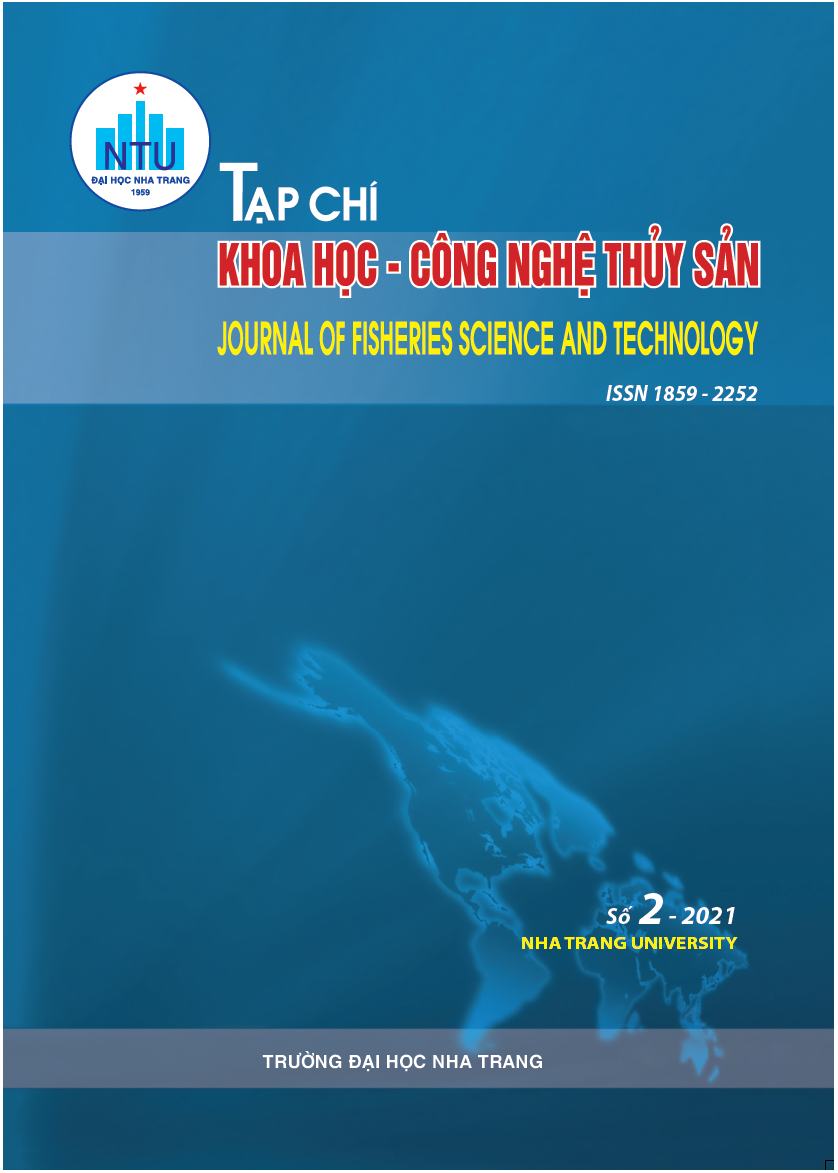##plugins.themes.huaf_theme.article.main##
Abstract
This study was carried out to evaluate the ability of rearing cobia, from fry to juvenile stages in Kien Giang in order to proactively supply high - quality seeds in the local regions. At the stage of fry to fingerling (5 - 6 cm), the fish were nursed in two forms of cement tanks (8 m3) and canvas ponds (500 m2). Newly hatched larvae of cobia were stocked at densities of 20 individuas/L and 300 - 500 individuals/m2, respectively. In the stage of fingerling to juvenile, the fish were reared in cement tanks (8 m3) with the stocking density of 0.5 - 0.8 individual/L. Rearing duration corresponding to the 2 stages was 35 and 30 days, respectively. Results showed that cobia grew and developed well in both forms of rearing models, cement tanks and canvas ponds. However, growth rate of fish reared in ponds was higher than that in cement tanks (0.24 compared to 0.20 cm/day). Meanwhile, survival rate of fish reared in tanks was higher than that in canvas ponds (19.3 as opposed to 14.5%). In the stage of fingerling to juvenile, cobia were well adapted to rearing conditions in cement tanks. The average size of fish was 11.5 cm after 28 - 30 days, with the survival rate of 87.3%. This study shows the feasibility of rearing cobia in cement tanks and canvas ponds in Kien Giang, thereby helping to actively sources of high - quality cobia seed on site, contributing to improving the efficiency and sustainability of cobia farming in Kien Giang.
Keywords: canvas pond, cement tank, cobia, Rachycentron canadum, larval rearing.

